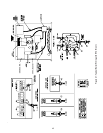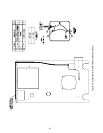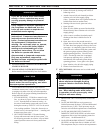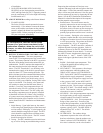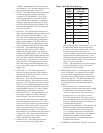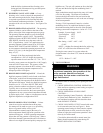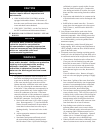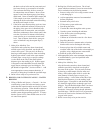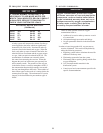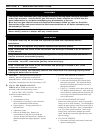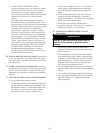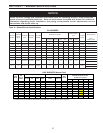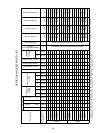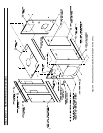
53
TNATROPMI
SITI,NOITAREPOLAMRONGNIRUD,FI
REPRETAWEROMDDAOTYRASSECEN
TLUSNOC,WOLEBDETACIDNINAHTHTNOM
OTNAICINHCETECIVRESDEIFILAUQA
.SKAELROFMETSYSRUOYKCEHC
:NOITIDDARETAWEVISSECXE
)htnoM/laG(
½6130-42
2240-42
½7250-42
3360-42
½8370-42
4480-42
½9490-42
5501-42
½0611-42
6621-42
M. FREQUENT WATER ADDITION
A leaky system will increase the volume of make-up
water supplied to the boiler which can signifi
cantly
shorten the life of the boiler. Entrained in make-up
water are dissolved minerals and oxygen. When the
fresh, cool make-up water is heated in the boiler, the
minerals fall out as sediment and the oxygen escapes
as a gas. Both can result in reduced boiler life. The
accumulation of sediment can eventually isolate
the water from contacting the cast iron. When this
happens the cast iron in that area gets extremely hot
and eventually cracks. The presence of free oxygen
in the boiler creates a corrosive atmosphere which, if
the concentration becomes high enough, can corrode
the cast iron through from the inside. Since neither of
these failure types are the result of a casting defect, the
warranty does not apply. The maintenance of system
integrity is the best method to prevent these types of
failure.
N. OXYGEN CORROSION:
GNINRAW
retawreliobehtfonoitanimatnocnegyxO
reliobleetsdnanorifonoisorrocesuaclliw
.eruliafreliobotdaelnacdna,stnenopmoc
revoctonseodytnarrawdradnatss'nworC
noitanimatnocnegyxoybdesuacsmelborp
pu-dliub)emil(elacsroretawreliobfo
.retawfonoitiddatneuqerfybdesuac
There are many possible causes of oxygen
contamination such as:
a. Addition of excessive make-up water as a result
of system leaks.
b. Absorption through open tanks and fi
ttings.
c. Oxygen permeable materials in the distribution
system.
In order to insure long product life, oxygen sources
must be eliminated. This can be accomplished by
taking the following measures:
a. Repairing system leaks to eliminate the need for
addition of make-up water.
b. Eliminating open tanks from the system.
c. Eliminating and/or repairing fittings which allow
oxygen absorption.
d. Use of non-permeable materials in the
distribution system.
e. Consult your local water treatment specialist for
specific recommendations.



